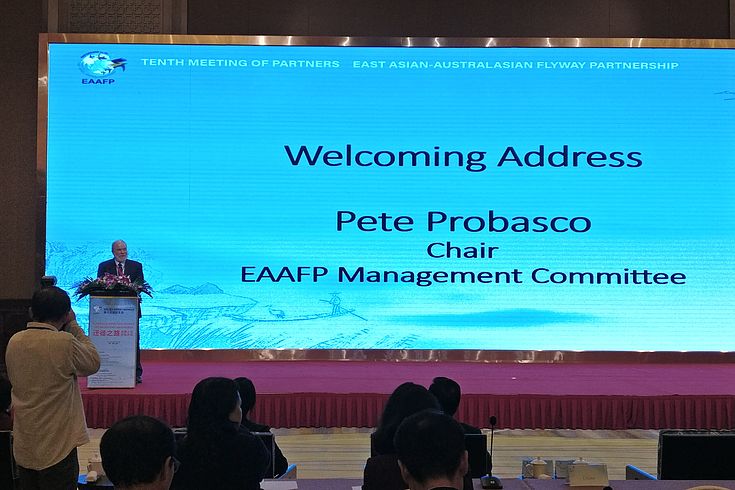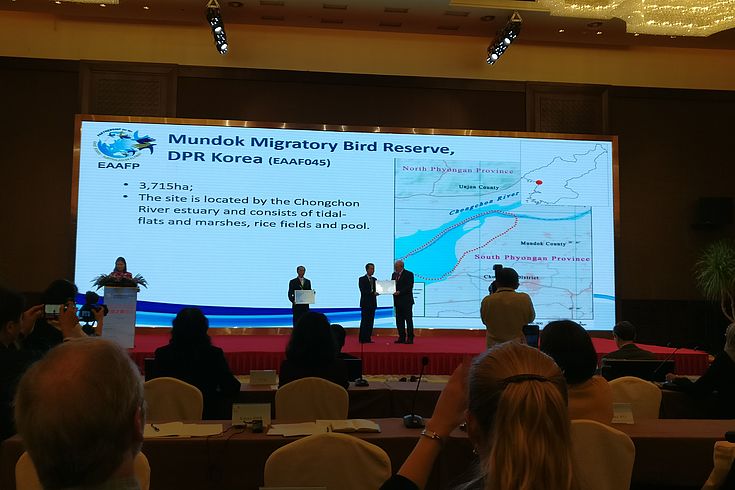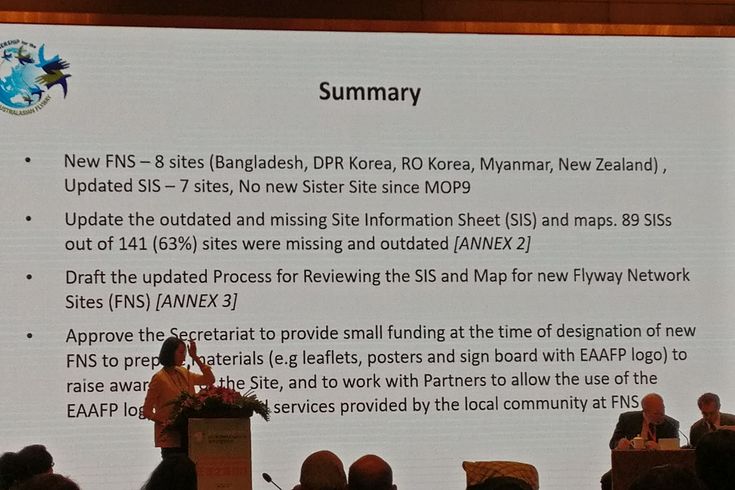International Conference
MoP of the East Asian-Australasian Flyway Partnership
Pete Probasco, head of the management committee of the EAAFP, welcomed the members and remembered the late Jim Harris of the International Crane Foundation
HSS
The protection of migratory birds along the so-called flyways, the migratory routes, is an important objective of nature and biodiversity protection, since only when protected along the whole flyway, migratory birds can survive. In the East Asian area, the East Asian Australasian flyway reaching from New Zealand and Australia in the South to Russia and Alaska in the North sees every year twice the movement of millions of migratory birds. Their protection is the goal of the EAAFP, the East Asian Australasian Flyway Partnership, a partnership of 18 governments and 17 NGO, among them Hanns-Seidel-Foundation, which in particular tries to support the protection of migratory birds on the Korean Peninsula.
Mundok in the DPRK was officially recognized as a new flyway networking site
HSS
In Hainan, China, now the 10th MOP of the EAAFP opened to discuss the future of migratory bird protection. For the first time, also the Democratic People’s Republic of Korea (North Korea) was among the partner governments. The accession of North Korea to the EAAFP has been supported by Hanns-Seidel-Foundation in recent years. Pete Probasco, head of the management committee of the EAAFP, welcomed the members and remembered the late Jim Harris of the International Crane Foundation, a major supporter of the work of EAAFP. Wu Zhimin, Director-General of the National Forestry and Grassland Administration, and Zhou Xumei, Deputy Director of the Forestry Bureau of Hainan Province, both of which were major facilitators and supporters of this year’s MOP, pointed out to recent improved protection of nature, in particular wetlands, in China.
Summary of the most recent activities of the EAAFP
HSS
In the opening ceremony, also two new partners were welcomed. One was the DPRK, as the 18th government joining the EAAFP. Ho Myong-Hyok, Senior official at the Ministry of Land and Environment Protection of DPRK, gave an overview of the recent work to protect wetlands in DPRK, including joining the Ramsar Convention on Wetlands and the EAAFP. He expressed his thanks for supporting DPRK on the way by several institutions, including Hanns-Seidel-Foundation and Birds Korea. As a new NGO partner, the Paulson Institute became a partner, which does major work on protecting coastal wetlands in China. Also, eight new flyway network sites, including Kumya Wetland and Mundok Wetland in DPRK as well as Hwasong Wetland in the Republic of Korea, were recognized. In a keynote speech, Prof. Lee Guangchun of Beijing Forestry University showed the central importance of China in the EAAF and discussed the long-term plans of China to improve the fate of wetlands in China, including the stop of wetland reclamation and the policy of “zero loss of nature wetlands”, a truly revolutionary policy to protect wetlands formerly under great stress in the country. The afternoon session of the opening day was devoted to the discussion of the work of the EAAFP in the last two years and plans for the future of the EAAFP. Lew Young, Chief Executive of the EAAFP, introduced the session, followed by program office Hyeseon Do and the heads of working groups, which should the full extension of the EAAFP work over the flyway with regards to challenges (from illegal hunting to awareness raising), species and habitats.



